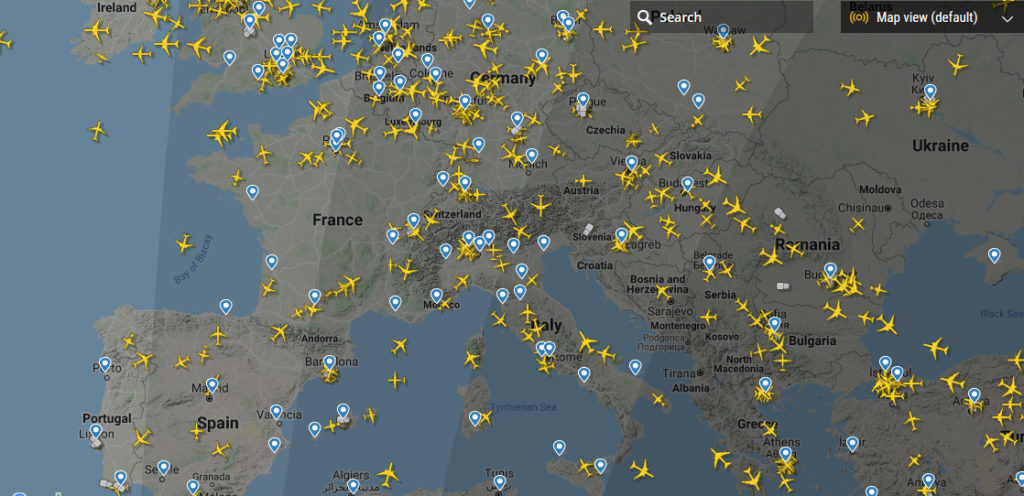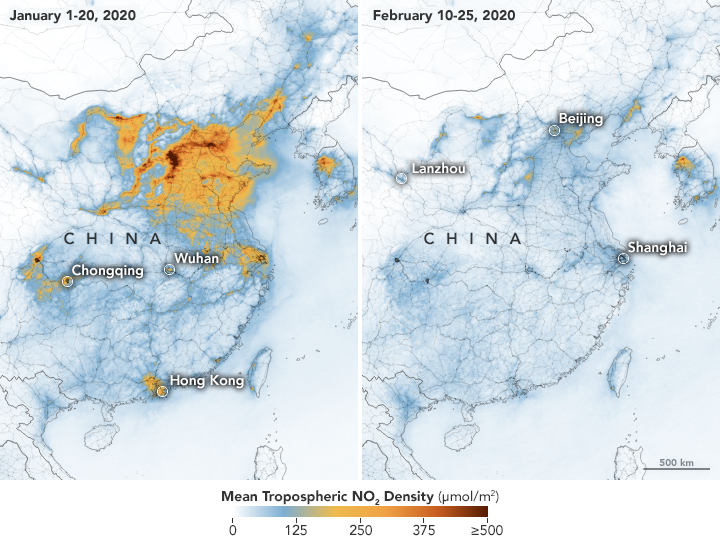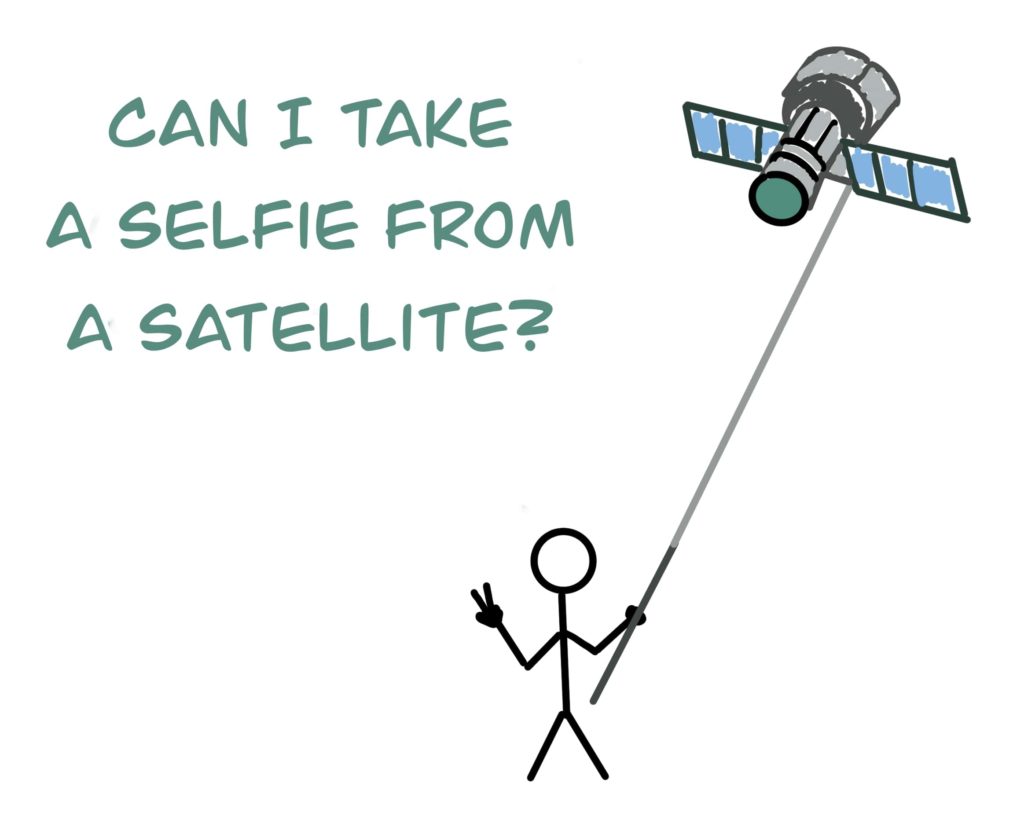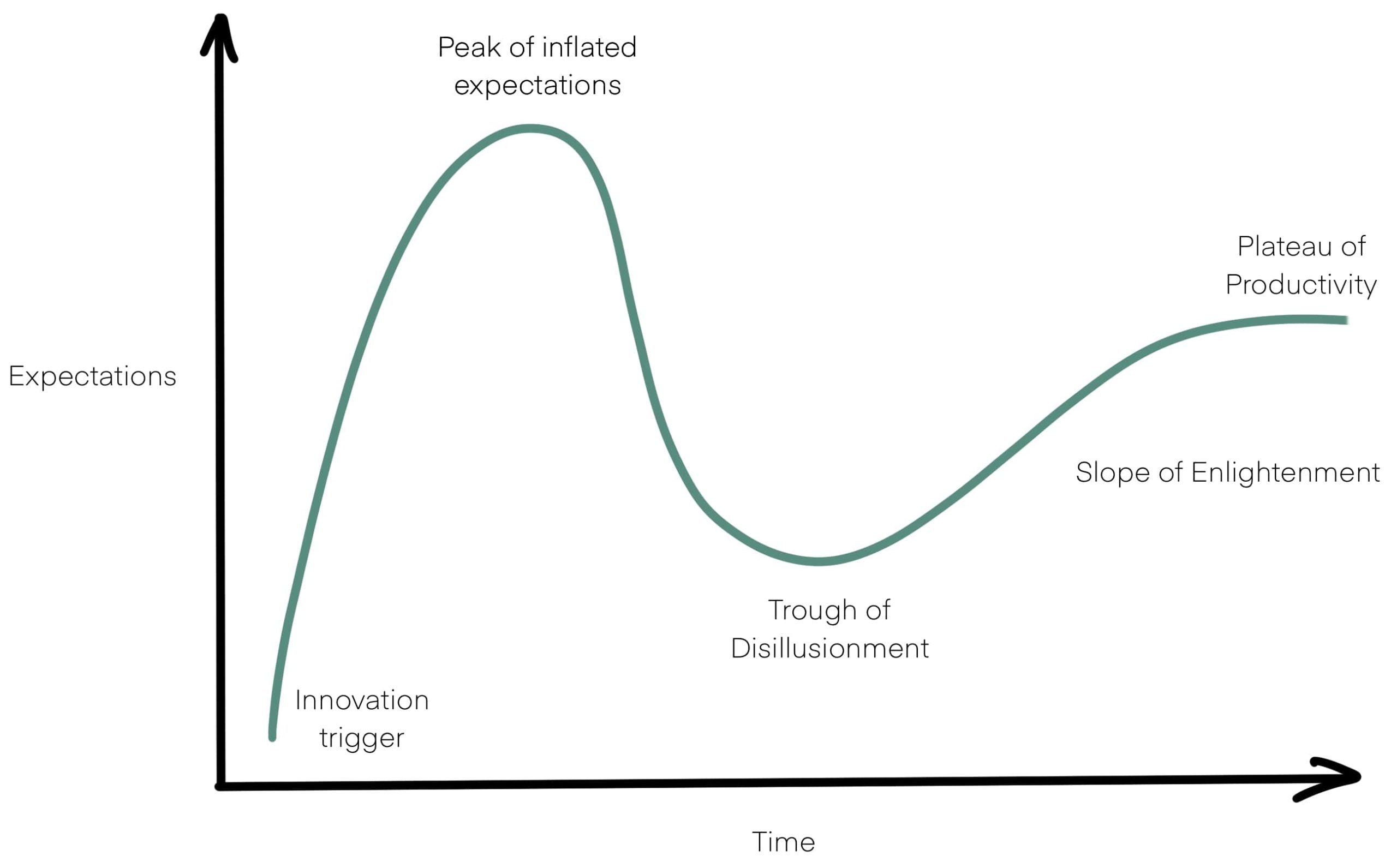
Better air quality over China due to anti-corona actions
Three moths ago nobody would have considered a shut down of transport, local businesses and industrial facilities as a consequence of the fight against the corona virus possible. Authorities all over the world have come up with plans to delimit and cease daily activities to prevent the corona virus from spreading further. This has led to quarantine regulations in China starting in February and many European countries following in March.
Highly perceptible for everyone is the reduction of public transport and as a consequence of the limitations to daily life also the private one. On the road from Klagenfurt to Munich last Saturday I counted less than 15 private cars on a stretch of around 350km! Airlines are reducing or ceasing regular flights, among them Emirates (cancellation of all passenger flights by 25th March), Etihad (cancellation of all passenger flights by 25th March), Ryan Air (grounding of most flights by 24th March), Lufthansa (operating return timetable mostly), Austrian Airlines (cancellation of all passenger flights by 18th March) and many more.

Screenshot showing flights over Europe on 26th March at 19:45. The flight traffic is significantly reduced compared to the regular flight traffic. Source: Flightradar24
The established regulations have an effect on the quality of air: NASA and ESA pollution monitoring satellites have shown a significant reduction in atmospheric nitrogen dioxine (NO2) over China in February 2020. – NO2 is created by burning fossil fuels, for instance in combustion engines or power plants, which is linked to the initially mentioned actions. It is highly poisonous and in the United States classified as an extremely harzadous substance (Section 302 of the U.S. Emergency Plannning and Community Right-to-Know Act (42 U.S.C. 11002)), causing respiratory symptoms and diseases (source).
In the figure below, the left panel shows the concentration of NO2 across China from January 1 – 20 before anti-corona virus actions taken. The panel on the right side exhibits NO2 concentrations across China in the time of February 10 – 25 during the quarantine. The comparison reveals a significant drop in NO2 over wide parts of the country. According to Fei Liu, air quality researcher at NASA’s Goddard Space Flight Center, such a dramatic drop-off over large areas was never observed so far (source).

Air quality over China – Nitrogen dioxine measured by TROPOMI instument on Sentinel-5P satellite over China between 1 January and 25 February 2020. Source: NASA Earth Observatory
The drop in nitrogen dioxine also coincides with the Lunar New Year festivities in China (last week of January until early February) and parts of Asia. Past observations reveal that air pollution during this time usually sinks as a consequence of closing factories and businesses. However, this years’s NO2 drop is more than a “holiday effect”, which is also undermined by the numbers of NO2 concentrations compared to the last years.
Simulation videos about the change of nitrogen dioxine concentration and air quality over China and most recently also in Northern Italy can be observed by clicking the corresponding links. The videos are contributed by ESA.
EO satellites
The presented NO2 concentrations were measured by the Tropospheric Monitoring Instrument (TROPOMI) on board of the Copernicus Sentinel-5P satellite, operated by ESA.
Sentinel-5 Precursor satellite is the first of atmospheric composition Sentinels and was launched on 13th October 2017. It’s life time is planned to last seven years. To obtain an impression about the instrument’s capability, the measurements made by TROPOMI and offered as Level-2 products are listed as follows: UV aerosol index, aerosol layer height (mid level pressure), carbon monoxide (CO), cloud (fraction, albedo, top pressure), formaldehyde (HCHO, total column), methane (CH4, total column), nitrogen dioxide (NO2, total column), ozone profiles, sulphur dioxide (SO2, total column), ozone (O3, total column), troposheric ozone (troppsheric column).
The Ozone Monitoring Instrument (OMI) on board of NASA’s Aura satellite has made similar measurements as the one shown by ESA’s Sentinel-5P.
One man’s joy is another mans sorrow
The corona pandemic has shown that dramatic actions taken by authorities can be realized within short time. Some of the taken actions are climate relevant and have a positive impact on the environment such as air quality within short time. This is undermined by the presented example of nitrogen dioxine concentration recorded by the Sentinel-5P satellite.
This pandemic makes us aware that we are adaptable to changing conditions and able to take actions in order to delimit the spread of a virus and in future – hopefully – also to reduce the effects of climate change.
If you enjoyed this article, read more and subscribe to our monthly newsletter!









